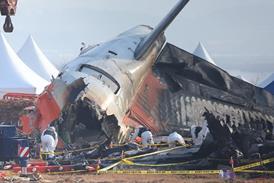The European Helicopter Safety Implementation Team has produced a concise guide to preventing and overcoming four of the most pernicious operational risks affecting rotary-wing flight.
This is one of the European Aviation Safety Agency's contributions to the global effort to improve helicopter safety launched by the International Helicopter Safety Team in 2005, and which is now ready for implemementation.
Just-published analysis of data from six years of European helicopter accidents has led the European team to identify four specific killer risks, and has decided to provide pilots and operators with a training strategy - and techniques - to avoid or deal with them.
The four hazards identified include unexpected encounters with a degraded visual environment; getting into a "vortex ring state"; loss of tail rotor effectiveness (LTE); and static and dynamic rollover. To counter these hazards, the Europoean team has produced the first in a forthcoming series of training leaflets intended to provide "methods to improve helicopter pilots' capabilities," with an emphasis on helping their technical understanding of the phenomena, how to avoid them, and how to recover.
The European Helicopter Safety Team (EHEST) has identified the top contributory factors leading to helicopter accidents through its analysis of final investigation reports from 2000 to 2005. These included pilot judgement and actions combined with deficiencies in the operators' safety culture and management, and inadequately performed ground duties - which includes mission preparation, flight planning and risk assessment.
Inadequate mission planning was high on the list of accident contributory factors in all types of helicopter operation, from commercial transport through aerial work to general aviation, and the new training leaflet provides pilots first with the information about how to plan and manage a mission to avoid exposure to the four hazardous conditions examined, to be able to recognise the developing risks early enough to avoid them, and finally how to carry out the recovery action to escape an accident once the condition is established.
EHEST found that operator safety culture and management is largely to blame for poor mission planning. It found evidence of a reluctance to "establish and apply effective standard operating procedures for all activities that they undertake", and recommends that the implementation of an effective safety management system would rectify the inherent conditions that lead to the kind of accidents that are happening today.
Source: Flight International























